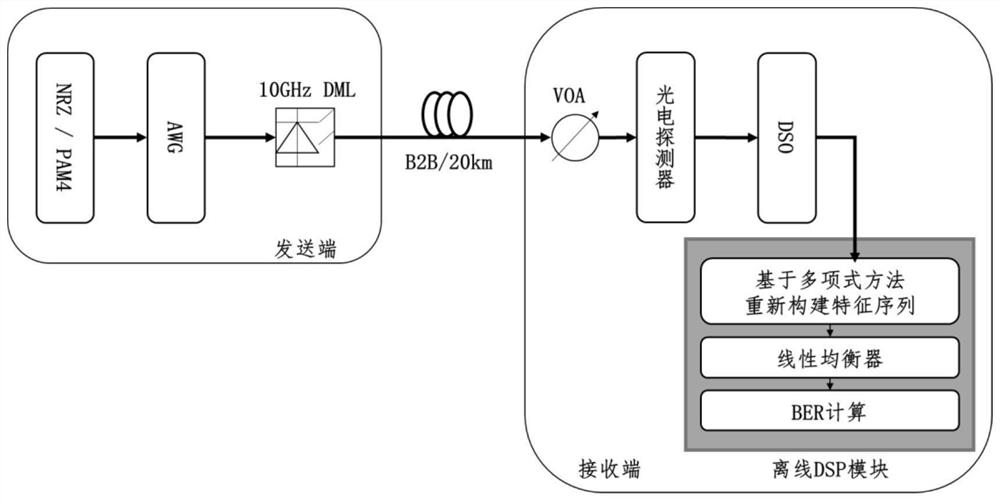Nonlinear equalization method and system based on feature construction of polynomial mapping
A feature construction and equalization method technology, which is applied in the field of optical communication, can solve problems such as high complexity, tap reduction, and Volterra equalizer performance degradation, and achieve the effects of reducing computational complexity, reducing the number of features, and reducing time costs
- Summary
- Abstract
- Description
- Claims
- Application Information
AI Technical Summary
Problems solved by technology
Method used
Image
Examples
Embodiment Construction
[0069] The present invention is further described below in conjunction with preferred embodiments. The following preferred embodiments will help those skilled in the art to further understand the present invention. The present invention can also be implemented or applied through other different specific implementation modes, and various modifications or changes can be made to the details in this specification based on different viewpoints and applications without departing from the spirit of the present invention.
[0070] The present invention provides an equalization technical solution based on polynomial mapping feature construction, which can be applied to equalize nonlinear damage in optical fiber communication systems, and introduce high-order nonlinear items of signals into the sampling signals at the receiving end by constructing polynomials. Features are constructed to compensate for channel nonlinear effects. For the signals that need to be equalized, the polynomial...
PUM
 Login to View More
Login to View More Abstract
Description
Claims
Application Information
 Login to View More
Login to View More - R&D
- Intellectual Property
- Life Sciences
- Materials
- Tech Scout
- Unparalleled Data Quality
- Higher Quality Content
- 60% Fewer Hallucinations
Browse by: Latest US Patents, China's latest patents, Technical Efficacy Thesaurus, Application Domain, Technology Topic, Popular Technical Reports.
© 2025 PatSnap. All rights reserved.Legal|Privacy policy|Modern Slavery Act Transparency Statement|Sitemap|About US| Contact US: help@patsnap.com



